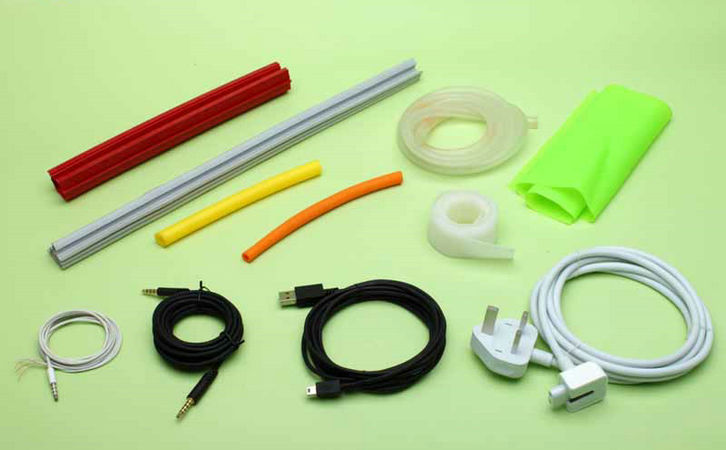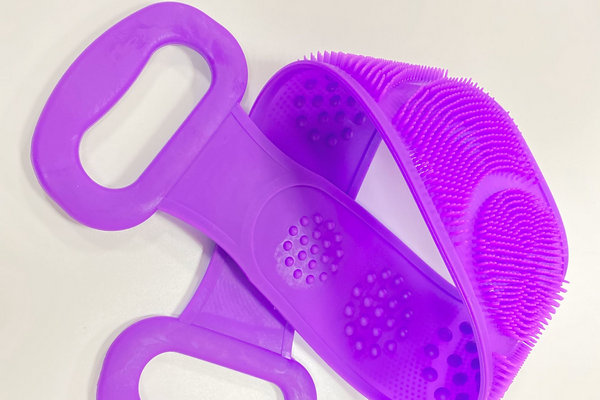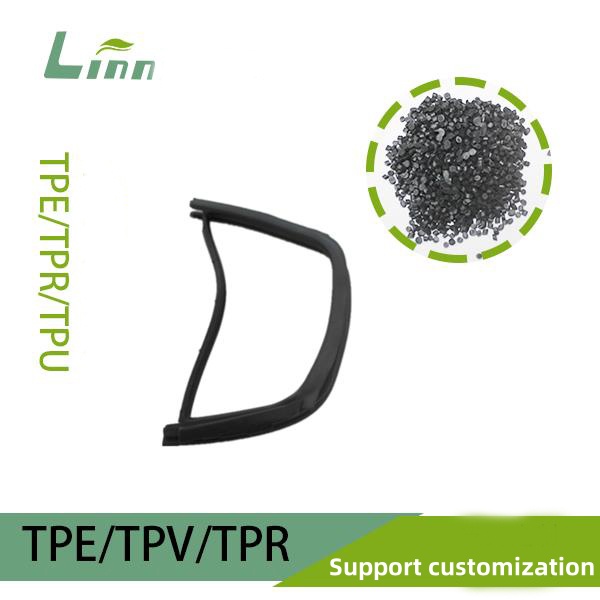Having spent years navigating the ups and downs of the TPE (Thermoplastic Elastomer) industry, I know all too well the frustration of dealing with peeling during injection molding. When the product surface starts flaking, looking rough or resembling “orange peel,” and clients are breathing down your neck for deliveries, it’s enough to make anyone lose their cool. Peeling in TPE injection molding doesn’t just compromise product quality—it can lead to costly rework and skyrocketing expenses. But after countless battles with this issue, I’ve gathered a toolbox of practical solutions. Today, I’m here to walk you through why TPE injection molding causes peeling and how to fix it, sharing my hard-earned tips in a conversational tone, hoping to help you get your production line back on track.

Why Does TPE Injection Molding Cause Peeling?
TPE’s excellent elasticity and processability make it a go-to material for injection molding, extrusion, and overmolding in industries like automotive, medical, and consumer goods. However, peeling—where the surface flakes, roughens, or develops a textured, uneven appearance—is a common headache during injection or overmolding. This not only ruins aesthetics but can also weaken durability and functionality. From my experience, peeling in TPE injection molding usually stems from these key culprits:
Material Issues: Incompatible formulations, moisture in raw materials, or excessive impurities.
Improper Process Parameters: Incorrect temperature, pressure, injection speed, or cooling time.
Mold Issues: Rough mold surfaces, poor venting, or design flaws.
Equipment Problems: Inadequate screw mixing or faulty temperature control systems.
Substrate Compatibility: Poor adhesion between TPE and substrates like PP or PC.
These issues rarely occur in isolation and often overlap, making troubleshooting feel like untangling a knot. Below, I’ll dive into solutions from the perspectives of materials, process parameters, molds, equipment, and substrates.

Practical Solutions for TPE Injection Molding Peeling
1. Start with Materials: Get the Foundation Right
Peeling often has its roots in the raw materials. I’ve seen plenty of cases where the issue seemed process-related, only to discover the real problem was the material itself.
Check Formulations: TPE typically comprises SEBS, SBS, plasticizers, fillers, and additives. Too much plasticizer can lower melt viscosity, causing surface peeling; excessive fillers may lead to roughness. Collaborate with your formulation engineer to fine-tune ratios. Generally, SEBS-based TPEs work well with 30%-50% plasticizer, depending on product hardness and substrate type.
Dry Materials Thoroughly: TPE, especially SEBS-based, is hygroscopic. Moist materials generate steam during injection, leading to peeling or bubbles. My practice is to dry TPE at 80°C for 4 hours using a dehumidifying dryer, ensuring moisture content stays below 0.1%.
Control Impurities: Impurities or high recycled material content can disrupt melt flow and surface quality. Use 80-120 mesh filter screens in the injection machine barrel and cap recycled material at 20% or less.
Pro Tip: If you switch TPE batches, always test the Melt Flow Index (MFI). I once overlooked a batch with a higher MFI, which caused peeling—adjusting the formulation saved the day.
2. Optimize Process Parameters: Nail the Injection Window
Injection molding parameters directly affect TPE flow and surface quality. Here’s my cheat sheet for key adjustments:
| Parameter | Recommended Settings | Notes |
|---|---|---|
| Barrel Temperature | 170-220°C (adjust per TPE type) | Too high risks degradation; too low impairs flow. Gradual increase from feed to nozzle. |
| Mold Temperature | 30-50°C | High mold temps cause sticking; low temps may lead to peeling or flow marks. |
| Injection Pressure | 50-100 MPa | Excessive pressure causes flash; insufficient pressure leads to poor filling. |
| Injection Speed | Medium-slow (30%-50% max speed) | Fast speeds may cause bubbles or peeling; slow speeds risk premature cooling. |
| Holding Time | 2-5 seconds | Insufficient holding causes shrinkage or peeling; too long extends cycle time. |
| Cooling Time | 10-20 seconds (based on part thickness) | Inadequate cooling leads to deformation or sticking; excessive cooling lowers efficiency. |
Temperature Profile: For SEBS-based TPE, I set the feed zone at 170°C, compression zone at 180-200°C, and nozzle at 200-210°C. TPU-based TPEs may need slightly higher temps. Keep mold temperature around 40°C for optimal results.
Injection Speed and Pressure: Peeling often ties to uneven melt filling. Try multi-stage injection, starting with low speed to fill 80% of the mold, then gradually increasing speed and pressure for uniform filling.
Cooling Optimization: Short cooling times can leave the TPE surface under-cured, causing peeling. Extend cooling by 1-2 seconds based on part thickness and ensure cooling water stays at 10-15°C.
Real Case: A client reported peeling on overmolded parts. I found the injection speed was too fast, causing melt overheating. Slowing it down and tweaking holding time dramatically improved surface quality.

3. Inspect Molds: Ensure a Flawless Surface and Venting
Molds are the face of TPE injection molding, and their condition directly impacts surface quality.
Mold Surface Polishing: Rough mold surfaces cause uneven TPE adhesion, leading to peeling. Polish mold cavities to Ra 0.2-0.4μm for a smooth finish.
Venting Design: Poor venting traps gases, causing surface defects. Add 0.02-0.05mm vent slots at parting lines or deep cavities and clean vents regularly.
Mold Temperature Control: Uneven mold temperatures lead to inconsistent cooling and peeling. Use a mold temperature controller to keep fluctuations within ±2°C.
Release Agents: Improper release agents can react with TPE, causing peeling. Opt for water-based release agents and apply sparingly to avoid excess.
Lesson Learned: Early in my career, I ignored mold venting issues, resulting in tiny peeling spots across products. Adding vent slots and refining polishing techniques slashed peeling incidents.
4. Maintain Equipment: Keep Injection Stable
The injection machine’s condition is critical to TPE molding quality. Here’s how to address common equipment issues:
Screw Mixing Capability: Worn or poorly designed screws lead to uneven TPE mixing, affecting surface quality. Check screw-barrel clearance (<0.5mm) regularly and replace if needed. I prefer high-mixing screws for better melt uniformity.
Temperature Control: Large temperature swings in the barrel or nozzle can cause peeling. Use an infrared thermometer to verify each zone, ensuring accuracy within ±5°C.
Hydraulic System: Unstable injection pressure can cause incomplete filling. Routinely check hydraulic oil quality and pressure sensors for system stability.
Barrel Cleaning: Residual material or carbonized buildup in the barrel can contaminate TPE, leading to peeling. Clean the barrel with PP purging compound every shift.
Pro Tip: Create an equipment checklist to log screw, barrel, and temperature system maintenance. It’s a simple way to minimize equipment-related peeling.

5. Boost Substrate Compatibility: Strengthen Bonding
In overmolding, TPE’s adhesion to substrates like PP, PC, or ABS is critical, and poor compatibility often causes peeling.
Choose the Right TPE: Different substrates require specific TPE grades. For PP, use SEBS-based TPE; for PC or ABS, consider TPU-based or modified TPE. Confirm with your supplier that the TPE matches the substrate’s polarity.
Substrate Pretreatment: Oil or overly smooth substrate surfaces reduce adhesion. Use plasma cleaning or flame treatment to boost surface tension to 38-42 dyn/cm.
Preheat Substrates: Before overmolding, preheat substrates to 50-70°C to enhance TPE-substrate bonding and reduce peeling.
Adhesive Primers: For tough substrates like PA, apply specialized primers, but test compatibility with TPE first.
Real Case: Severe peeling occurred on TPE overmolded PC parts due to mismatched TPE polarity. Switching to a high-polarity TPE and preheating the substrate resolved the issue perfectly.
6. Control the Environment: Don’t Overlook the Details
Workshop conditions can subtly impact TPE injection molding:
Humidity Management: High humidity causes TPE to absorb moisture, leading to peeling. Keep workshop relative humidity below 50%, using industrial dehumidifiers if needed.
Material Storage: Store TPE in a cool, dry environment below 25°C, away from direct sunlight or heat.
Workshop Cleanliness: Dust or debris can contaminate TPE, causing surface defects. I clean the injection machine’s feed port and mold surfaces daily.
Common TPE Injection Molding Peeling Issues Summarized
To streamline troubleshooting, here’s a table of common peeling issues and solutions:
| Issue | Possible Cause | Solution |
|---|---|---|
| Surface peeling, “orange peel” | Fast injection speed or low mold temperature | Reduce injection speed to 30%-50%, increase mold temperature to 40-50°C |
| Localized peeling, poor adhesion | Poor TPE-substrate compatibility or contaminated substrate | Switch to compatible TPE, plasma-clean or preheat substrate to 50-70°C |
| Surface bubbles or minor peeling | Moist materials or poor venting | Dry TPE (80°C, 4 hours), add 0.02-0.05mm vent slots |
| Rough surface, visible flow marks | Rough mold surface or low barrel temperature | Polish mold to Ra 0.2-0.4μm, increase barrel temperature by 5-10°C |
| Peeling with shrinkage or deformation | Insufficient cooling or improper holding | Extend cooling time by 1-2 seconds, adjust holding time to 3-5 seconds |
Long-Term Prevention of TPE Injection Molding Peeling
Fixing peeling is just the beginning; preventing it from recurring is the real challenge. Here’s what I’ve found effective:
Standard Operating Procedures (SOPs): Document optimal injection parameters, mold maintenance, and operational workflows for consistent execution.
Regular Mold Maintenance: Polish molds, inspect vent slots, and check temperature control systems every quarter.
Raw Material Quality Control: Build long-term supplier relationships and routinely test TPE MFI and moisture content.
Data-Driven Management: Use MES systems to log temperature, pressure, and speed data for traceability and optimization.
Stay Ahead: Keep tabs on new TPE formulations and injection technologies, like high-flow TPEs, to maintain a competitive edge.
My Journey: When I started, peeling issues left me scrambling, relying on mentors for guidance. Over time, I began logging every parameter tweak and its impact, building my own “playbook.” Now, even with new materials or complex molds, I can tackle challenges with confidence.

Frequently Asked Questions
Here are some common questions and answers to deepen your understanding:
Q1: TPE overmolded parts peel and lack adhesion—what’s the fix?
A: Likely poor TPE-substrate compatibility. Ensure the TPE grade suits the substrate (e.g., SEBS for PP, TPU for PC). Plasma-clean or preheat the substrate to 50-70°C. Specialized primers may help for tough cases.
Q2: Why do I get tiny peeling spots on the surface?
A: Usually due to moist materials or poor mold venting. Dry TPE to below 0.1% moisture and check vent slots. Adding 0.02-0.05mm vents often resolves the issue.
Q3: How do I know if my mold needs re-polishing?
A: If surfaces are rough or peeling worsens, measure mold cavity roughness. If Ra exceeds 0.4μm, re-polish to 0.2-0.4μm.
Q4: Why is peeling worse with TPU-based TPE than SEBS-based?
A: TPU-based TPEs are more sensitive to temperature and shear, prone to degradation or uneven flow. Lower barrel temperature by 5-10°C, slow injection speed, and stabilize mold temperature at 40-50°C.
Q5: How do I avoid peeling during new mold trials?
A: Start with the supplier’s processing guidelines and run small-scale trials. Adjust injection speed (reduce by 10% each time) and mold temperature (±5°C), logging surface quality. You’ll typically hit the sweet spot in 3-5 trials.
Final Thoughts
TPE injection molding peeling may seem like a minor glitch, but it’s a complex test of materials, processes, molds, and operations. As a veteran in this field, I’ve learned that every solution is built on persistence and lessons from the shop floor. I hope this guide acts as your trusty “first-aid kit,” empowering you to tackle peeling with confidence. If you’re wrestling with other production challenges, drop a comment—I’d love to dive in and solve them with you!
